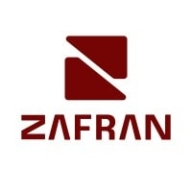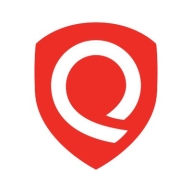


Microsoft Defender for Cloud and Qualys CyberSecurity Asset Management compete in the cybersecurity management category. Microsoft Defender for Cloud appears to have an edge due to its seamless integration within Microsoft environments and support for multi-cloud setups.
Features: Microsoft Defender for Cloud boasts robust visibility across security setups, AI and ML-based detections, and compliance policy recommendations. It's well-integrated with Microsoft products and suited for multi-cloud environments. Qualys CyberSecurity Asset Management excels in asset discovery, tagging, and comprehensive views of hardware and software for attack surface management, including end-of-life and end-of-support software insights.
Room for Improvement: Microsoft Defender for Cloud could enhance user-specific features like alert management and adaptable recommendations, alongside better third-party tool integration and real-time monitoring. Qualys CyberSecurity Asset Management may improve cost-effectiveness, integration capabilities, offer better customization, a more user-friendly interface, and richer reporting features for diverse needs.
Ease of Deployment and Customer Service: Microsoft Defender for Cloud is adaptable across public and hybrid clouds with streamlined deployment in the Microsoft ecosystem, but customer support can be inconsistent. Qualys CyberSecurity Asset Management is deployed in public and hybrid clouds with on-premises options, offering generally responsive customer support yet needing better early problem resolution.
Pricing and ROI: Microsoft Defender for Cloud provides flexible pricing models with potential cost savings when integrated with Azure services. Although some find it pricey, it ensures positive ROI with comprehensive security features. Qualys CyberSecurity Asset Management, despite being considered expensive as an add-on, offers competitive bundled solutions, proving cost-effective for larger organizations with noted value for its capabilities despite higher costs.



Zafran Security integrates with existing security tools to identify and mitigate vulnerabilities effectively, proving that most critical vulnerabilities are not exploitable, optimizing threat management.
Zafran Security introduces an innovative operating model for managing security threats and vulnerabilities. By leveraging the threat exposure management platform, it pinpoints and prioritizes exploitable vulnerabilities, reducing risk through immediate remediation. This platform enhances your hybrid cloud security by normalizing vulnerability signals and integrating specific IT context data, such as CVE runtime presence and internet asset reachability, into its analysis. No longer reliant on patch windows, Zafran Security allows you to manage risks actively.
What are the key features of Zafran Security?
What benefits can users expect from Zafran Security?
In industries where security is paramount, such as finance and healthcare, Zafran Security provides invaluable protection by ensuring that only exploitable vulnerabilities are addressed. It allows entities to maintain robust security measures while allocating resources efficiently, fitting seamlessly into existing security strategies.
Microsoft Defender for Cloud is a comprehensive security solution that provides advanced threat protection for cloud workloads. It offers real-time visibility into the security posture of cloud environments, enabling organizations to quickly identify and respond to potential threats. With its advanced machine learning capabilities, Microsoft Defender for Cloud can detect and block sophisticated attacks, including zero-day exploits and fileless malware.
The solution also provides automated remediation capabilities, allowing security teams to quickly and easily respond to security incidents. With Microsoft Defender for Cloud, organizations can ensure the security and compliance of their cloud workloads, while reducing the burden on their security teams.
Qualys CyberSecurity Asset Management provides advanced real-time asset visibility, dynamic tagging, and External Attack Surface Management. It streamlines asset discovery and management using cloud agents and IP-based scanning, enhancing risk management and software lifecycle tracking.
Qualys CyberSecurity Asset Management offers a comprehensive solution for managing asset inventories and tracking software lifecycle states. It facilitates network visibility and supports zero-day vulnerability solutions, enhancing security posture through efficient monitoring. Users benefit from its cloud-based interface, which provides in-depth asset configurations and insights. Key features include automated vulnerability scanning and unauthorized software management, reducing manual efforts. The platform also emphasizes the importance of timely remediation and ongoing risk mitigation across multiple environments. Despite its strengths, users note the need for enhanced integration with additional CMDBs beyond ServiceNow, as well as cost efficiency improvements. Requests also include better report customization, more scan control, and a simplified UI.
What are the key features of Qualys CyberSecurity Asset Management?In industries like finance, healthcare, and manufacturing, Qualys CyberSecurity Asset Management enhances asset control by offering visibility into hardware and software configurations. It aids in maintaining security compliance and identifying unauthorized software, crucial for sectors with strict regulatory requirements.
We monitor all Vulnerability Management reviews to prevent fraudulent reviews and keep review quality high. We do not post reviews by company employees or direct competitors. We validate each review for authenticity via cross-reference with LinkedIn, and personal follow-up with the reviewer when necessary.